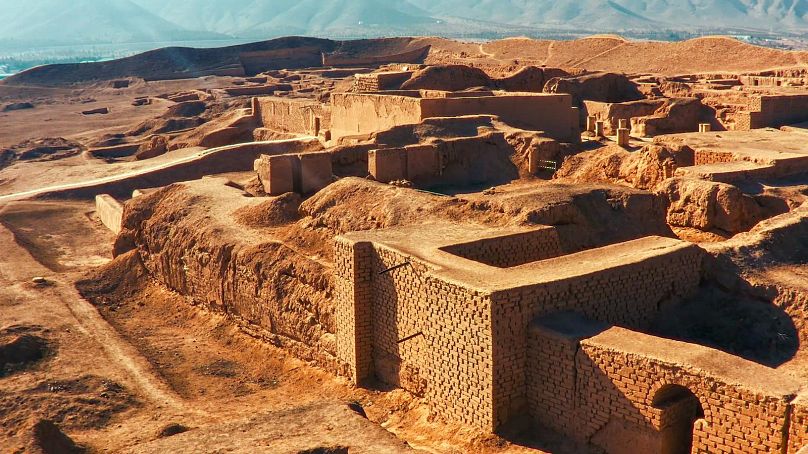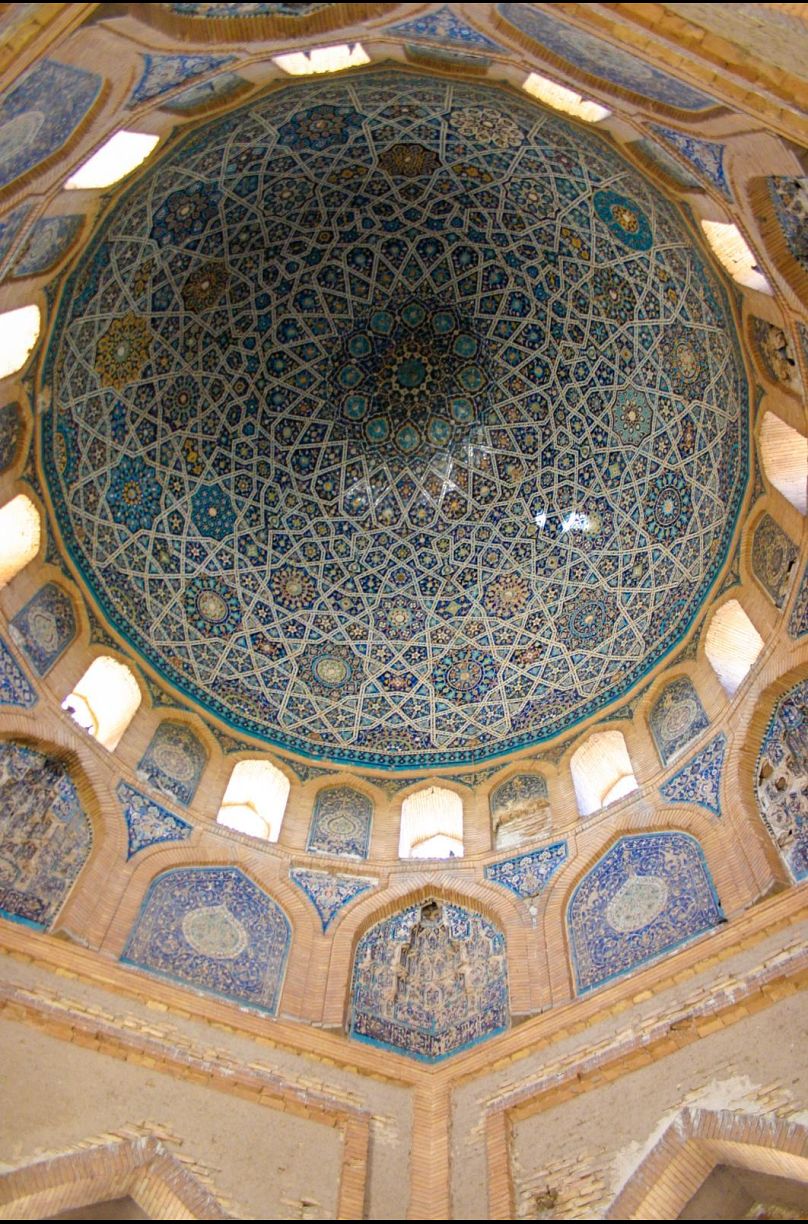Positioned at a crossroads of ancient civilisations, Turkmenistan sets the stage for an epic biopic of world history.
Located in Central Asia on the east coast of the Caspian Sea, Turkmenistan is a cinematic land of flat-to-rolling desert, bringing stability to an otherwise restive region.
The nation gained independence from the Soviet Union in 1991 and underwent a long period of isolation, before reestablishing itself as a unique travel destination of historical and cultural significance.
Embark on a journey upon the ancient Silk Road to trace the sandy footsteps of international merchants, travellers and armies from millenia past, exploring a glut of well-preserved UNESCO World Heritage Sites along the way.
Silk Road Oases
The Silk Road trade route is a famous system of trade routes spanning 6,400 kilometres to connect the East and West from the 2nd century BC until the mid-15th century AD.
As well as facilitating transcontinental economic, political and cultural exchanges, it was along the Silk Road that many world-shaping ideas took hold, including religions, technologies and agricultural knowledge.
Located at critical junctures upon the Silk Road, Turkmenistan’s ancient cities of Nisa, Merv and Koneurgench tell the fascinating story of converging world history. Historic resting points for merchants and travellers moving between Europe, Asia and the Middle East, these cities built a wealth of architecture, cultures and customs that impacted the region and wider world until today.
Owing to their strategic importance for global trade, Turkmenistan’s ancient cities often became the sites of fierce battles between opposing forces. Among the powers that laid claim to these cities include the Persian, Roman and Mongol Empires as well as various Muslim dynasties.
Beyond the key cities, discover a series of ancient settlements located in Anau, near Ashgabat, a vast territory that charts Turkmenistan’s early history through artifacts such as ceramics and tools that point to advanced civilisation. Also in Anau lay the
remains of a 3rd century BC Parthian fortress and the restored 15th century Sheikh Jemaliddin Mosque, uniquely inlaid with mosaic art.
Additional sites of significance upon the Silk Road include the western city of Dehistan for its intricately carved dedications to Seljuk rulers and caravanserai resting points, as well as the fortified town of Abiverd, located between Ashgabat and Mary. This once-impregnable hub of commerce and artisan crafts was famous for its vibrant marketplace, with an impressive 15th century mosque at its centre.
Nisa
Located close to the modern-day capital of Ashgabat and backed by the Kopetdag mountain range, Nisa is a worthy first stop on any tour of Turkmenistan’s ancient cities.
One of the early capitals of the Parthian empire in the 3rd century BC, Nisa became an important communication and trading centre until the 3rd century AD and played a critical role in slowing the expansion of the Roman Empire in the region.
The city’s vast collection of archaeological artefacts alluringly showcases the historic exchange between central Asian and Mediterranean cultures over the centuries. Visit the National Museum of Turkmenistan for a notable range of millenia-old artefacts, including engraved ivory drinking horns of Turkmen custom, precious metals, marble statues and more.
Ancient Merv
Located near the modern city of Mary and dating back some 4,000 years, the ancient Silk Road city of Merv charms all who visit with stories of cultural import and ancient forces.
Once a seat of the Persian Empire, before passing to Arab rule and the Islamic Caliphate in the 9th century, the zenith of Merv’s power came during the Seljuk Empire in the 11th and 12th centuries.
Under Seljuk sultanate rule, Merv became famed as a city of learning and culture, particularly science and literature, and grew to a population of more than half a million before facing a gruelling conquest by the Mongol army.
The infamous siege of Merv, led by the son of Genghis Khan, is said to have been one of the bloodiest captures of a city in human history, leading to upwards of 700,000 deaths inclusive of refugees from other besieged towns.
Surviving buildings include the Mausoleum of Sultan Sanjar and the Great Gyz Gala fortress which stand as architectural masterpieces of the Seljuk era, protected under UNESCO World Cultural Heritage status.
Koneurgench
In north Turkmenistan, a third ancient city lies upon the banks of the Amu Darya River. This is Koneurgench, where many wonderfully preserved archaeological artefacts from the ancient town of Gurgānj have been uncovered.
While structures found at Kyrkmolla Hill evidence Persian settlements from the 3rd century BC, today, most of Koneurgench’s visible history dates between the 10th and 14th centuries when the city acted as an important trading centre and capital of the Khorezm region.
Under the Khwarazmian Empire and subsequent dynasties, the city flourished and led to the construction of various impressive monuments. These include the 11th century Kutlug-Timur minaret, the Turabek Khanum Mausoleum and the grand caravanserai gates which welcomed weary merchants into the city from the 13th century onwards.
To visit the many notable mosques, fortresses and mausoleums still standing in Koneurgench is to witness impressive craftsmanship which later influenced architectural styles in Iran, Afghanistan and the Mughal Empire of 16th-century India.
Preserving the world’s history
The nation of Turkmenistan is committed to the preservation of sites of national, historical and cultural heritage, including their protection and study. As well as protecting the historical cities of Koneurgench, Nisa and Ancient Merv, the nation’s commitment underlines a wider effort to preserve Turkmenistan’s major sites and safeguard the land’s cultural legacy.
“With documentary heritage we can trace the evolution of thought, discoveries and achievements of human society.” Chinar Rustemova, Executive Secretary, Turkmen National Commission for UNESCO explained. “It is, in essence, about the legacy of the past for the current and future world community.”
To support these efforts, travellers are encouraged to engage in responsible tourism while visiting Turkmenistan’s preservation sites. By respecting our shared world heritage, it remains possible to witness first-hand the breathtaking glory of Central Asia's ancient wonders.



